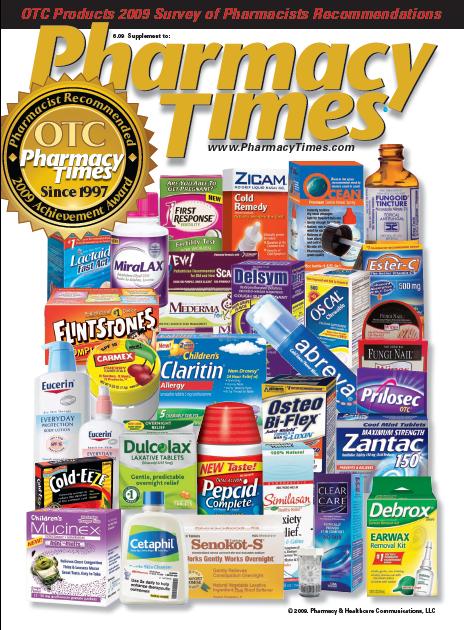Helping Patients Develop Heartburn Action Plans
The sheer prevalence of heartburn in the United States calls for a wide array of treatment options. According to the National Diges-tive Diseases Information Clearinghouse, 50 million Americans experience heart--burn at least once a month, and 15 million live with the condition every day. For these patients, it is a boon to have so many OTC options available at their fingertips. Weeding through the plethora of products to find the right one can be harrowing without the help of a pharmacist, who also can offer tips regarding lifestyle changes to minimize symptoms.
“As with any OTC medication, consumers should read the label and follow directions closely to understand what the medicine is used for, to ensure appropriate dosing, and to avoid dangerous drug interactions. Should they have any questions, it is important that they talk to their pharmacist. Severe or ongoing symptoms should be reported to a health care provider,” said Janet P. Engle, PharmD, executive associate dean, professor, and head of the Department of Pharmacy Practice at the University of Illinois at Chicago College of Pharmacy.
In patients for whom self-treatment with OTC products is appropriate, pharmacists have the opportunity to provide counseling and education for a safe and effective plan of action. Whether it is through the use of antacids, histamine2-receptor antagonists (H2RAs), or proton pump inhibitors (PPIs), heartburn therapy with OTC medications has proven much more than something to turn to when prescription drugs are not available.
According to new research from the Consumer Healthcare Products Association (CHPA) and The Neilsen Co, there is a 94% patient satisfaction rate with available OTC heartburn medications. Aside from symptom relief, patient satisfaction with the OTC products undoubtedly stems from the estimated average annual savings of $174 per person in office visits and medication costs. The country’s health care system as a whole does not fare too badly, either. Fewer office visits for patients with heartburn represent a savings of $757 million annually for the US health care system.
“This is wonderful news for consumers,” said CHPA President Linda Suydam. “This study points to a high level of satisfaction plus cost savings among those who turn to OTC heartburn medicines for symptom relief.”
The high level of patient satisfaction notwithstanding, it remains of utmost importance for those choosing OTC heartburn medi-cations to speak with their pharmacists and become educated on which product is right for them. This especially holds true when one considers that 61% of those surveyed by CHPA and Neilsen reported treating their heartburn without first discussing symp-toms with a health care provider.
Patients must be made aware of just how crucial it is to be armed with knowledge about OTC medications, whether for heartburn or any other condition. Choosing a product without information on adverse effects and drug—drug interactions could prove harmful to a patient lacking adequate education on the medication. In addition, pharmacists can enlighten patients on simple lifestyle changes that can result in improved outcomes.
With the prevalence of heartburn, it is no wonder that the number of available OTC treatments is growing all the time. Although there is currently only one OTC PPI, 2 more are slated for release in the fall.
New antacids, H2RAs, and combination products also are rolling out to meet the needs of a variety of patients. Comprehen-sive patient counseling is the key to ensuring that these products are matched with the right patients to achieve the utmost benefit.

